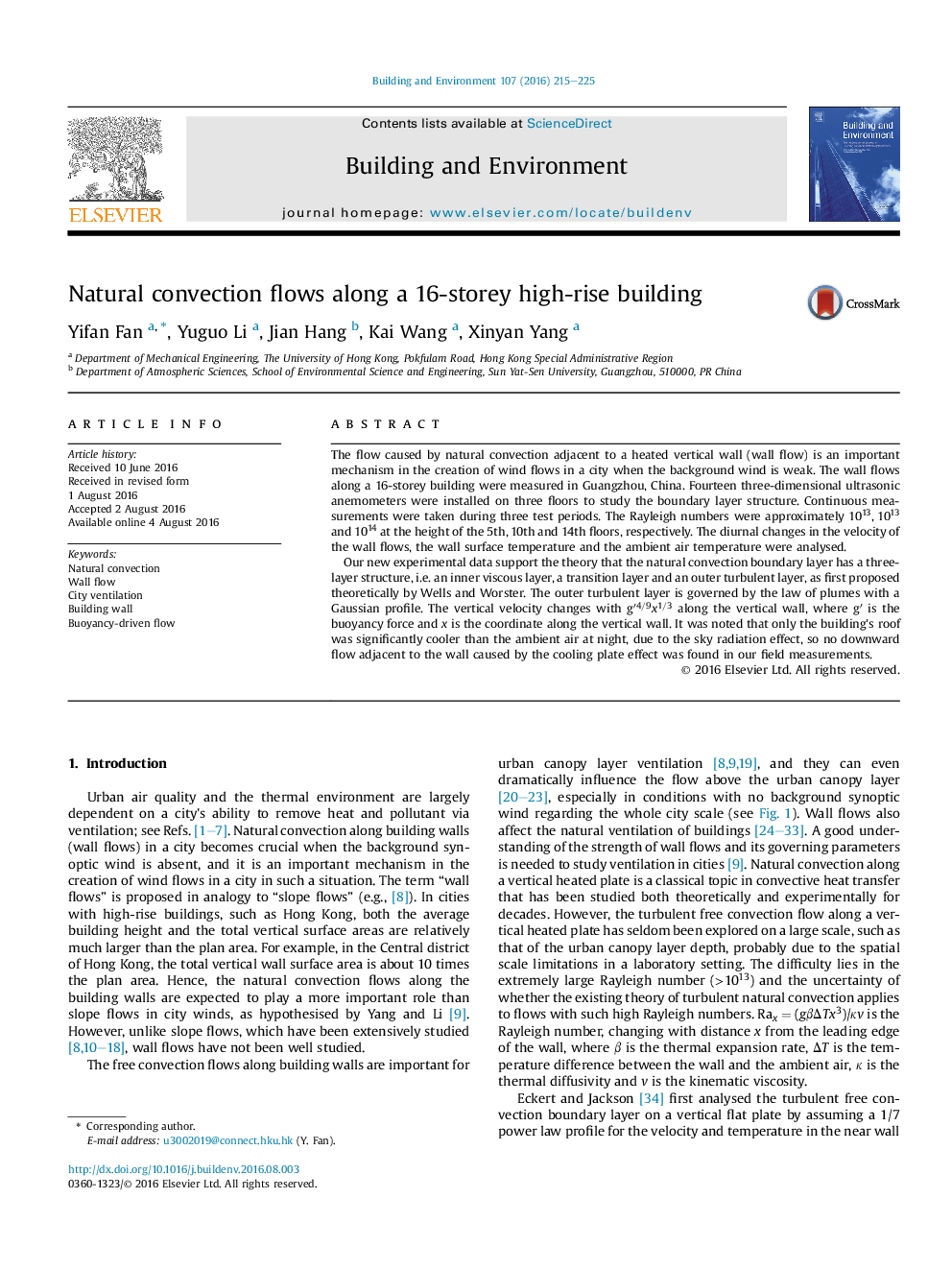| Article ID | Journal | Published Year | Pages | File Type |
|---|---|---|---|---|
| 6698676 | Building and Environment | 2016 | 11 Pages |
Abstract
Our new experimental data support the theory that the natural convection boundary layer has a three-layer structure, i.e. an inner viscous layer, a transition layer and an outer turbulent layer, as first proposed theoretically by Wells and Worster. The outer turbulent layer is governed by the law of plumes with a Gaussian profile. The vertical velocity changes with gâ²4/9x1/3 along the vertical wall, where gâ² is the buoyancy force and x is the coordinate along the vertical wall. It was noted that only the building's roof was significantly cooler than the ambient air at night, due to the sky radiation effect, so no downward flow adjacent to the wall caused by the cooling plate effect was found in our field measurements.
Related Topics
Physical Sciences and Engineering
Energy
Renewable Energy, Sustainability and the Environment
Authors
Yifan Fan, Yuguo Li, Jian Hang, Kai Wang, Xinyan Yang,
